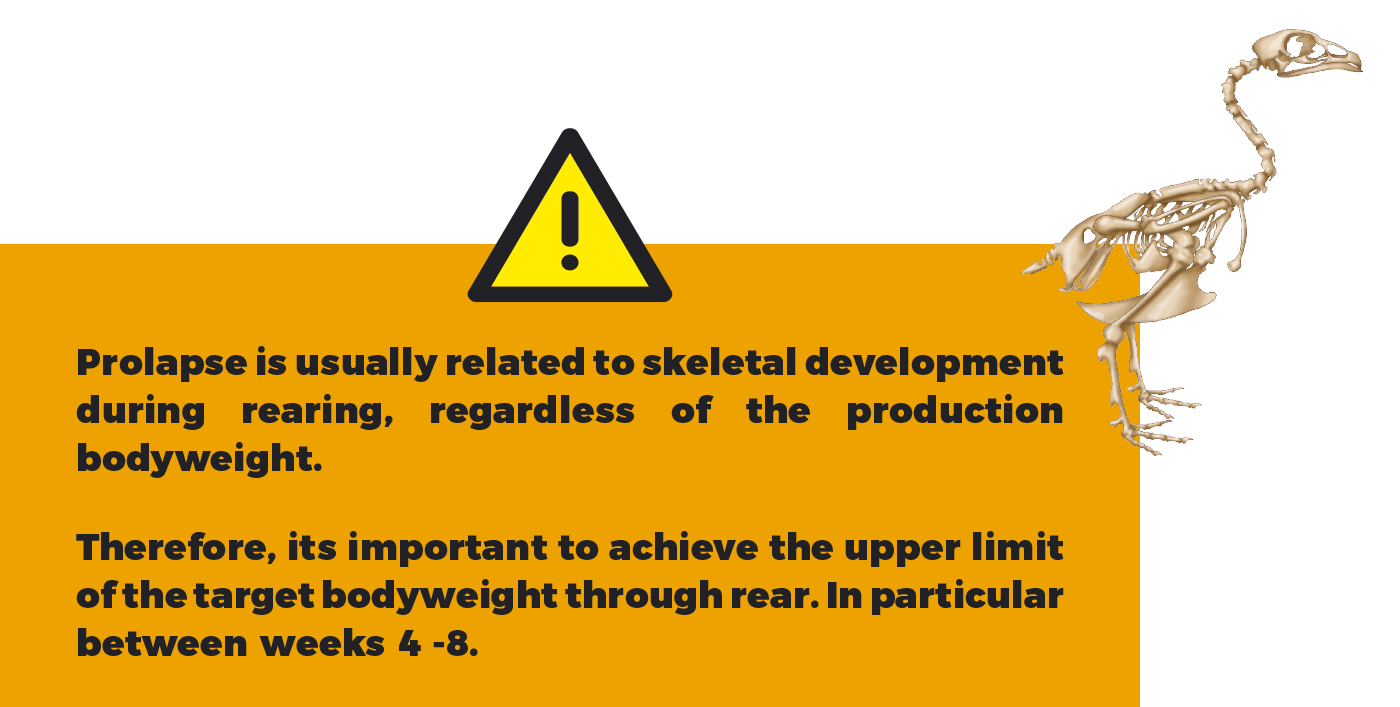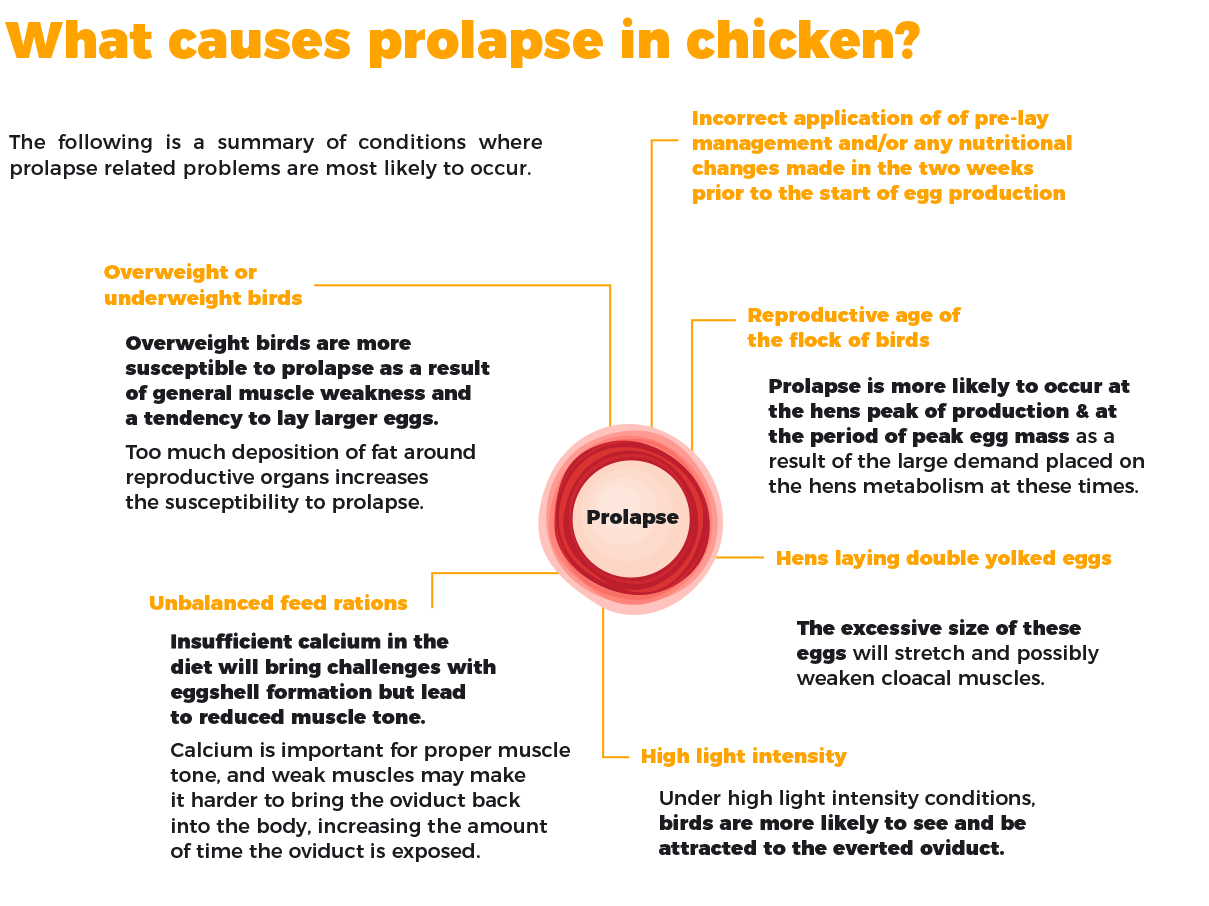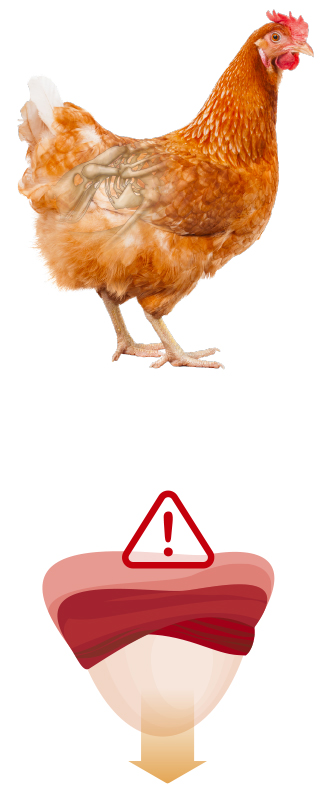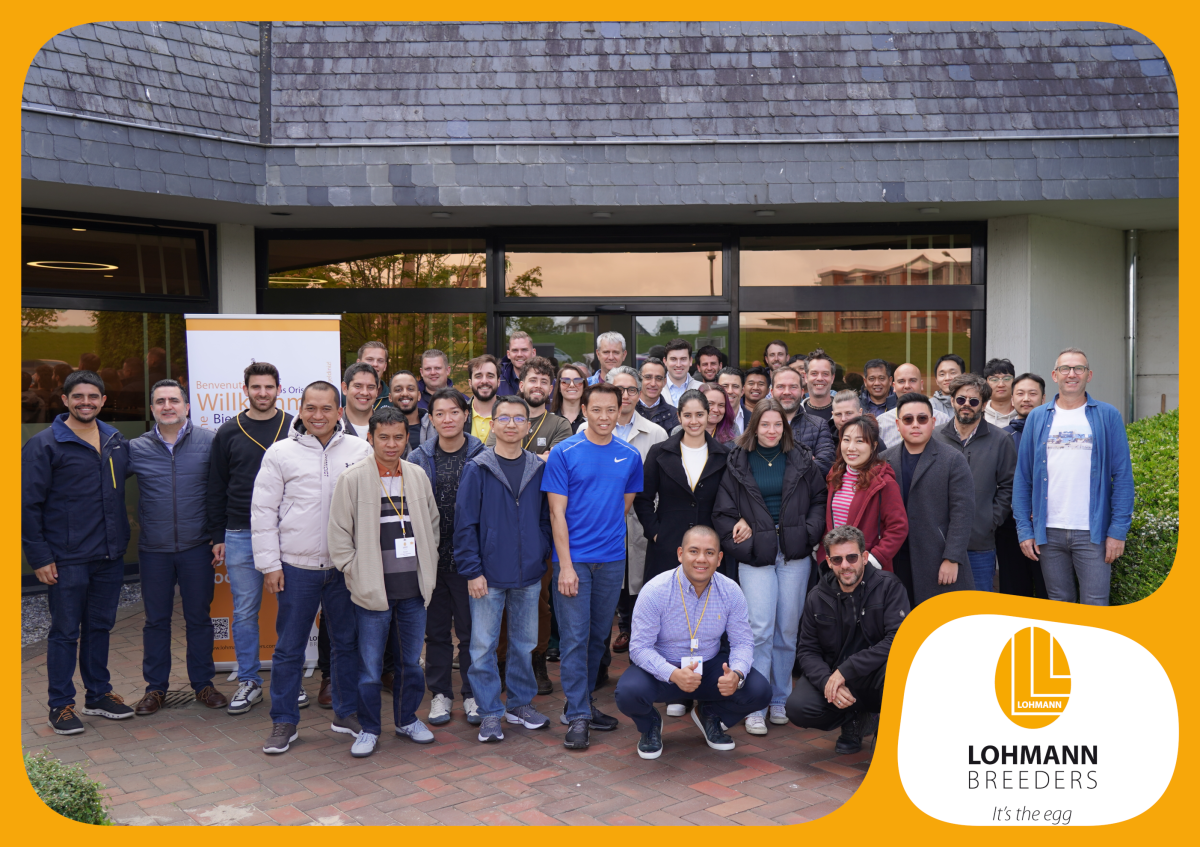During the process of laying an egg, the lower part of the reproductive tract (oviduct) is temporarily turned inside out which allows the hen to lay a clean egg and reduce the possibility of bacteria entering the oviduct.
Sometimes the tissue does not retract after the egg has been laid and this condition is referred to as a prolapse.
If other hens notice the prolapse, they will be attracted to the moist, glistering texture of the oviduct which can lead to increased pecking behaviour.The first indication of a prolapse problem is the presence of blood-streaked eggs. Early detection of such eggs may help to prevent further damage.



Having more energy in the diet than required may increase the carbohydrate level in the diet which can contribute to increased intestinal fat reserves.
A too high overall fat content in the feed will also contribute to the risk of prolapse, due to the increased accumulation of fat in the abdominal region, which in turn, narrows the egg passage causing the hens to strain themselves when pushing the egg out, often resulting in prolapse.
- The key to preventing the onset of prolapse issues is through good management. Early detection and prompt action is key in minimizing the effects of prolapse.
- When a prolapse issue is evident in the flock we often attribute the increased mortality figures to the occurrence of the prolapse itself. This is generally not the case.
- The increase of mortality can be associated to an increase in cannibalism through picking and pecking at the inverted vent of other hens leading to blood loss and intestinal damage.
- Often one of the first signs we see of a prolapse outbreak is an increase in blood streaked eggs. This should be used as a prompt to implement management techniques to reduce the impact of the issue and prevent further associated health issues.

Photo-stimulation should occur when the birds reach the weight and age recommended by the breeder.

Balanced feed rations are required to sustain egg production and maintain body weight at recommended levels.

Ensure that light intensity in the house is at the breeder’s recommended level. In high intensity situations look to covering the windows, if present and reducing the wattage of your bulbs.

Observation is key to detect any undesired vent – pecking behaviour, before it becomes a serious issue.

Spray any prolapsed vents with a suitable medicated spray such as Oxytetravet (if possible) to aid recovery.

Poor nest box management which allows the hens to stay in the boxes longer than necessary can increase the risk of vent pecking behaviour.

Do not exceed 16 hours light duration (better 15 hours). Also reduce light intensity (maximum 40 lux in open houses, 20-30 lux in environment control houses).

Adjust ME in feed to lower limit of recommendations in developer phase.

Supplement Vitamin C @ 1 g/l drinking water in morning hours.
Thereafter resume normal practices
In most cases, the onset of prolapse issues in
laying hens is caused by a combination of factors.
Understanding trigger points can help prevent
these issues occurring:

Hens being overweight.

Starting to increase the number of hours of light per day (photostimulation) before the pullet has reached the correct weight.

Feeding unbalanced diets.

Train the hens to use the nest boxes for laying only. Vent pecking issues often occur in this are due to exposure of the vent to other hens.

Hens that lay large double-yolked eggs are more prone to prolapse. Prolapse is also likely to occur at peak production.

There is no effective treatment for prolapse. Prevention is the best method of control.

Only photo-stimulate your pullets when they have reached the right body weight and age. This will vary from breed to breed but is typically around 17 weeks of age.

Feed only balanced feed rations specifically formulated for pullets and then layers.

Monitor your light intensity. Chickens are more sensitive to light than humans and excessive light can lead to undesired pecking behaviour particularly around the vent area when prolapse are present.







 Management
Management 